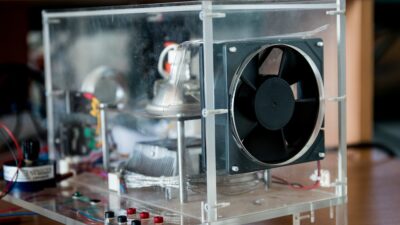In an age where technology increasingly intertwines with everyday life, robotics stands out as one of the most rapidly evolving fields. From autonomous vehicles and industrial robots to drones and healthcare technologies, robotics engineers are at the forefront of innovation. But what does a typical day look like for these tech-savvy professionals? Join us as we peel back the curtain on the daily grind of a robotics engineer.
Morning: The Day Starts with Preparation
8:00 AM – Arriving at the Office
A robotics engineer’s day often begins early. Arriving at the office, they’re greeted by a mix of whirring machines and flashing computer screens. With a cup of coffee in hand, they take a moment to review emails, prioritizing tasks based on project deadlines and team communications.
9:00 AM – Daily Stand-Up Meetings
Team collaboration is crucial in robotics engineering. Daily stand-up meetings are common, where team members gather to discuss progress, outline goals for the day, and address any roadblocks. This collaborative atmosphere fosters problem-solving and encourages creative ideas.
Mid-Morning: Immersed in Design and Development
9:30 AM – CAD Modeling and Simulation
After the morning meeting, it’s time to dive into design work. Using specialized software like SolidWorks or AutoCAD, the engineer creates 3D prototypes of robotic components. Simulation tools help predict how these designs will perform under real-world conditions, allowing for adjustments before physical prototyping.
11:00 AM – Coding and Software Development
Robotics isn’t just about hardware; software plays an equally critical role. Engineers often write and debug code that controls the robot’s movements, enabling tasks like navigation, obstacle avoidance, or object recognition. Languages such as Python, C++, and ROS (Robot Operating System) are commonly used.
Lunch Break: Fueling Up for Innovation
12:30 PM – Lunch with Colleagues
During lunch, robotics engineers often engage in casual discussions about technology trends, share ideas, or even brainstorm solutions to challenges they face in their projects. Networking with colleagues helps foster a collaborative spirit and serves as an idea incubator.
Afternoon: Hands-on Testing and Iteration
1:30 PM – Prototyping and Assembly
Post-lunch, the focus shifts to practical implementation. The engineer might spend time in the lab assembling robots based on their designs, integrating hardware like sensors and actuators. The tactile nature of this work is satisfying, as engineers get to see their concepts come to life.
3:00 PM – Testing and Troubleshooting
Once the prototype is assembled, testing begins. This involves running the robot through various scenarios to evaluate its performance. When issues arise—be it a malfunctioning sensor or unexpected behavior—the engineer leaps into troubleshooting mode, drawing upon their analytical skills to diagnose and fix the problems.
Late Afternoon: Collaboration and Documentation
4:30 PM – Team Collaboration
As the day winds down, engineers often meet with cross-functional teams, including marketing, production, or other engineering disciplines, to ensure product alignment. Effective communication is vital, as different teams have unique perspectives and needs that must be addressed to meet project goals.
5:00 PM – Documentation and Reporting
Before wrapping up the day, engineers document their findings, progress, and any adjustments made during testing. Proper documentation is crucial not only for future reference but also for sharing insights with team members and stakeholders.
Evening: Lifelong Learning and Personal Projects
6:00 PM – Professional Development
As technology evolves rapidly, continuous learning is essential in the field of robotics. Many engineers take the time in the evening to enroll in online courses, attend webinars, or read up on the latest research papers. This proactive approach keeps their skills sharp and opens doors to new concepts and techniques.
7:00 PM – Personal Projects
For some robotics engineers, the end of the workday doesn’t mean the end of robotics. Passionate about their field, many engage in personal projects at home, experimenting with DIY robots, contributing to open-source projects, or even mentoring aspiring engineers in their communities.
Conclusion: A Career Driven by Passion and Innovation
The life of a robotics engineer is dynamic, filled with challenges that require creativity, collaboration, and technical expertise. With each day brimming with opportunities to innovate and contribute to groundbreaking advancements, these engineers are not just building machines—they are shaping the future. Whether working on cutting-edge technology or fine-tuning existing products, the impact of their work resonates far beyond the boundaries of the lab. With a commitment to lifelong learning and creativity, robotics engineers are truly at the heart of tomorrow’s technological landscape.



